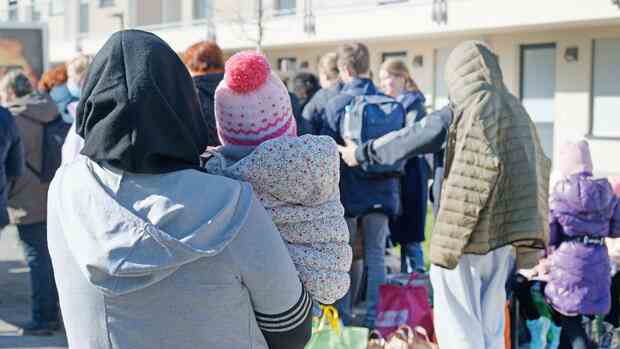In addition to the strong immigration from Ukraine, the immigration of people of other nationalities has also increased significantly.
(Photo: dpa)
Berlin The immigration of war refugees from Ukraine has driven the population in Germany to a record level. It climbed to at least 84.3 million at the end of 2022, as the Federal Statistical Office announced on Thursday in an initial estimate.
“This means that more people lived in this country than ever before at the end of a year,” reports the authority. It recorded an increase of 1.1 million people within a year. The reason for this strong growth is a new high in so-called net immigration. This value describes the difference between immigration and emigration figures.
According to current estimates, 1.42 to 1.45 million more people came to Germany than left abroad. “This means that net immigration in 2022 was more than four times as high as in the previous year (2021: 329,163) and higher than at any time since the time series began in 1950,” writes the Federal Statistical Office.
In addition to the strong immigration of war refugees from Ukraine, the immigration of people of other nationalities has also increased significantly.
Top jobs of the day
Find the best jobs now and
be notified by email.
In a press release from November 2022, the federal government listed around 140,000 people with Ukrainian citizenship living in Germany in 2021. In the statistics, this population group was well behind residents with passports from Romania, Poland, Bulgaria, Afghanistan or Syria.
However, the numbers changed rapidly when the war began in February 2022: According to the press release, around 890,000 Ukrainian nationals lived in Germany last year, followed by around 826,000 people with a Romanian passport.
More deaths than births: Without net immigration, Germany’s population would shrink
In the three decades since German reunification, Germany’s population had largely grown. The only exceptions were 1998 and 2003 to 2010.
However, the population growth had only resulted from the fact that more people had immigrated than emigrated. Without net immigration, the population would have been shrinking since 1972, as more people have died than have been born every year since then.
A decline in the number of births and the increase in the number of deaths have had a dampening effect on population growth in 2022. According to the reports from the registry offices available so far, the number of births fell by around seven percent compared to 2021 (795,492) and is likely to be between 735,000 and 745,000. The number of people who died within a year, on the other hand, rose by around four percent to around 1.06 million.
More: Draft law presented – federal government hopes for 50,000 additional workers from abroad per year
